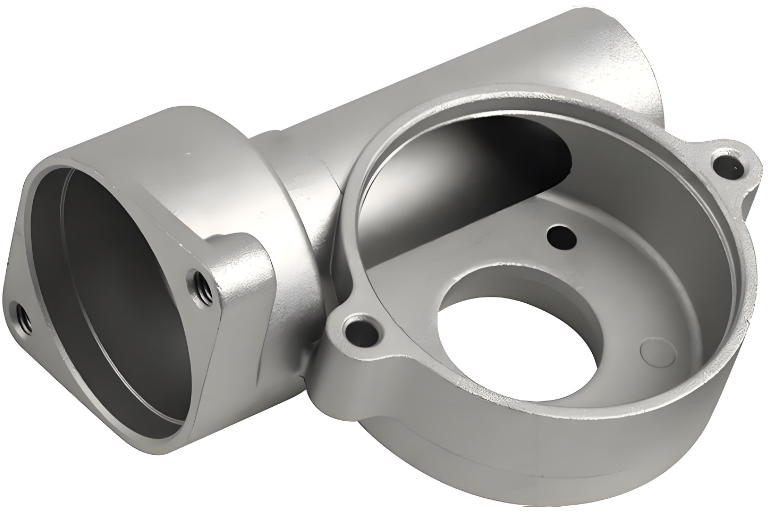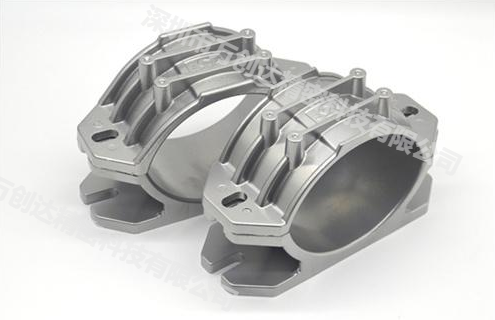CNC Machining Applications in Automotive Parts: Processes & Benefits
Explore how CNC machining powers the production of automotiv...
1. What is die casting?
Die casting is a common casting process, the process is characterized by applying high pressure to high temperatures melted metal substances through the inner cavity of the mold, so a casting method that to make it crystallize, referred to as die casting.
Molds generally require extremely high strength alloys to be processed, and the entire molding process feels a bit like injection molding. Molds generally require extremely high strength alloys to be processed, and the entire molding process feels a bit like injection molding. In fact, in mold design and manufacturing, many processes are interlocked and combined and each individual process is essential.
In most cases, the castings we die cast are generally iron free, such as common alloys lead, copper, aluminum, magnesium, and tin or tin alloys.
The definition of die-casting is actually easy to understand, and it can be better understood by combining the characteristics of melting or semi melting.
The definition of die-casting is actually easy to understand, and it can be better understood by combining the characteristics of melting or semi-melting.
Die casting is generally divided into cold chamber die casting machines and hot chamber die casting machines.
Cold chamber die casting machines are generally used to process metal materials that cannot be processed by using hot chamber die casting machines, common materials such as copper, magnesium, aluminum, and other zinc alloys with high aluminum content.Cold chamber die-casting machines can be divided into vertical die-casting machines and horizontal die-casting machines. Generally speaking, vertical die-casting machines have smaller models and occupy smaller areas, while corresponding horizontal die-casting machines are larger and have more complex and diverse models.

During the operation of hot chamber die casting, the piston of the machine will be in a contracted state at the beginning of the cycle. At this point, the molten metal can be finished filling the goose neck area, which is known as inherent goose neck die casting.
Hot chamber die casting has brought great convenience in mold design and manufacturing, such as saving time. The advantage of this system is its fast cycle speed. practical results show that it can complete approximately 15 cycles per minute, and due to consistent operation actions, it is easy to achieve automated operation, greatly saving time, manpower, and material costs. Of course, hot chamber die casting is mostly used on small castings.

3.What is the significance and value of die-casting?
People who familiar with mold design and manufacturing know that traditional processes such as cutting and welding of parts will waste a lot of raw materials, but with die-casting, consumables can be greatly saved
As we mentioned earlier, die casting can save time and manpower. In the process of die casting, the emergence of integrated die casting can be regarded as a shining star in the manufacturing industry!
Complex parts or products can be molded in one go by pressing melted metal into the mold under high pressure, achieving a seamless process. But not only because of high efficiency, but also because it creates infinite possibilities and guarantees quality.
The traditional assembly method has certain limitations, while die-casting integrated molding allows people to achieve their imagination. Many designers can unleash their own designs, resulting in more cool and practical items; Due to its one-piece molding without joints, its material properties will be greatly improved in terms of safety, strength, and durability.
Of course, die-casting also has certain challenges, such as the fact that its die-casting machines are generally expensive. For some small-scale manufacturers, simply adding equipment is a consideration.
4.What are the application areas of die-casting?
Die casting has a wide range of applications, commonly used in industries such as automotive and aerospace that require particularly high requirements to the parts.Especially in the field of electronic manufacturing, die-casting is also indispensable.
For example, the mobile phone, laptop, and other products you are using to read this article are all part of the category of die-casting products. Components such as circuit boards, heat sinks, battery sockets, etc. cannot be omitted from the use of die-casting.

We may occasionally hear about die-casting cars, so what exactly is a die-casting car?
For the automotive manufacturing industry, the emergence of die-casting undoubtedly solves the pain points of high requirements and safety from R&D engineers.
In automobile manufacturing, most of them are used to manufacture critical components and parts that require "stamping and welding" processes. "Stamping and welding" refers to the stamping and welding process. As we mentioned earlier, die-casting can be integrated into one piece, and the application of this technology in the automobile manufacturing industry is undoubtedly a great blessing.

Next, let's briefly discuss the steps of die-casting:
1. Prepare the required molds: based on the user's design requirements, manufacture die-casting molds that meet the requirements, including upper and lower molds.
2. Raw material preparation, casting and molds are essential here.
3. Heat to melt the metal.
4. Close the upper and lower molds.
The follow-up is a series of routine operations such as injection, cooling, deburring, and cleaning. In short, with the progress of the times, die-casting technology has shown that the development of mold design and manufacturing industry is advancing rapidly.Explore how CNC machining powers the production of automotiv...
Discover how high-precision CNC machining enables ultra-accu...
Explore how CNC machining technology, through high precision...
Learn about the different types of metal plating processes, ...
Surface treatment technologies are integral to improving mat...

Copyright © 2024 Shenzhen Xunchuangda Precision Technology Co., Ltd. ALL Rights Reserved




